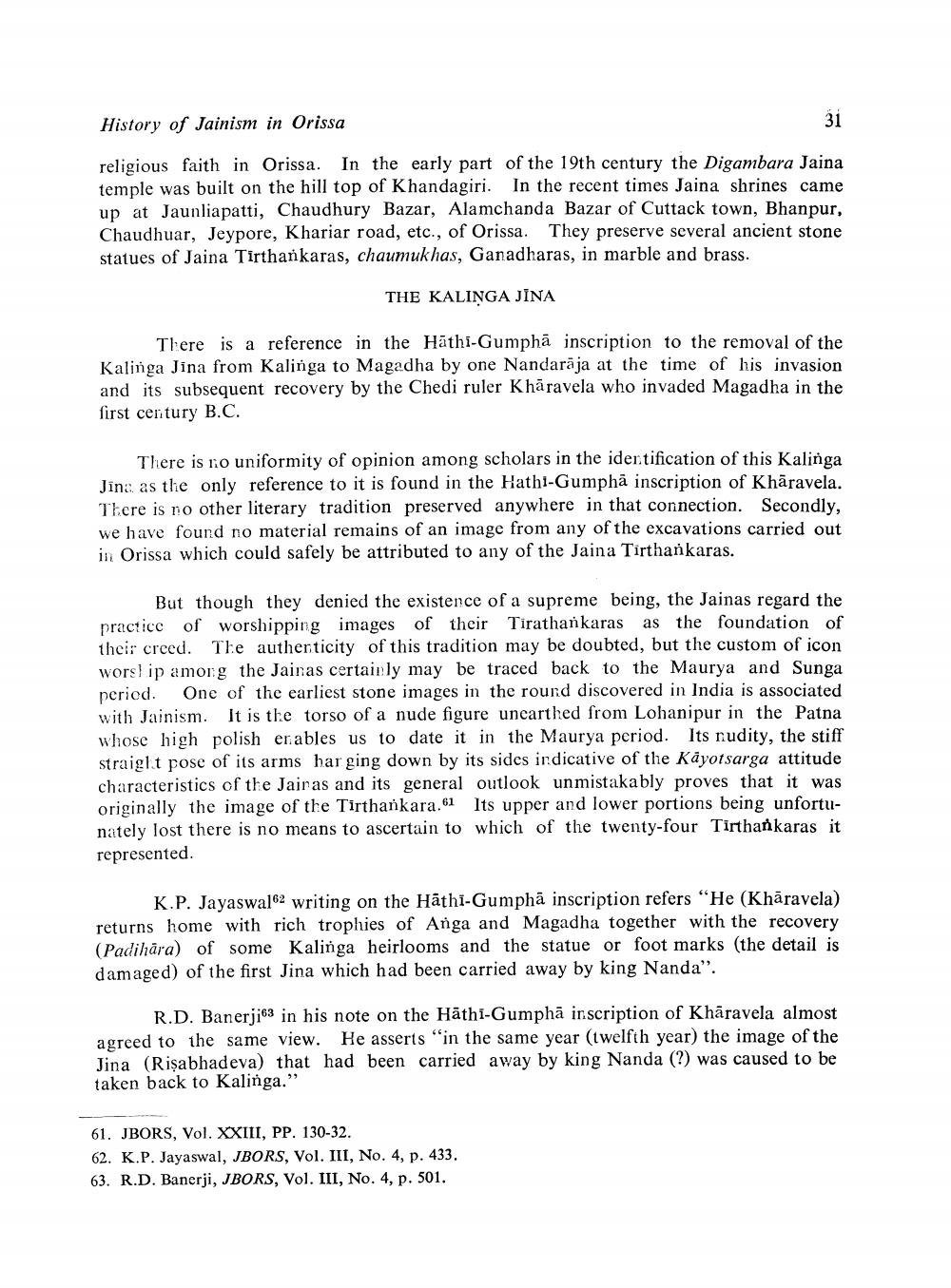________________
History of Jainism in Orissa
31
religious faith in Orissa. In the early part of the 19th century the Digambara Jaina temple was built on the hill top of Khandagiri. In the recent times Jaina shrines came up at Jaunliapatti, Chaudhury Bazar, Alamchanda Bazar of Cuttack town, Bhanpur, Chaudhuar, Jeypore, Khariar road, etc., of Orissa. They preserve several ancient stone statues of Jaina Tirthankaras, chaumukhas, Ganadharas, in marble and brass.
THE KALINGA JINA
There is a reference in the Hathi-Gumphā inscription to the removal of the Kalinga Jina from Kalinga to Magadha by one Nandarāja at the time of his invasion and its subsequent recovery by the Chedi ruler Khāravela who invaded Magadha in the first century B.C.
There is no uniformity of opinion among scholars in the identification of this Kalinga Jins, as the only reference to it is found in the Hathi-Gumphā inscription of Khāravela. There is no other literary tradition preserved anywhere in that connection. Secondly, we have found no material remains of an image from any of the excavations carried out in Orissa which could safely be attributed to any of the Jaina Tirthankaras.
But though they denied the existence of a supreme being, the Jainas regard the practice of worshipping images of their Tirathankaras as the foundation of their creed. The authenticity of this tradition may be doubted, but the custom of icon wors! ip among the Jainas certainly may be traced back to the Maurya and Sunga peried. One of the earliest stone images in the round discovered in India is associated with Jainism. It is the torso of a nude figure unearthed from Lohanipur in the Patna whose high polish erables us to date it in the Maurya period. Its nudity, the stiff straight pose of its arms har ging down by its sides ir dicative of the Kāyotsarga attitude characteristics of the Jairas and its general outlook unmistakably proves that it was originally the image of the Tirthankara.61 Its upper and lower portions being unfortunately lost there is no means to ascertain to which of the twenty-four Tirthankaras it represented.
K.P. Jayaswal2 writing on the Hathi-Gumphā inscription refers “He (Khāravela) returns home with rich trophies of Anga and Magadha together with the recovery (Padihāra) of some Kalinga heirlooms and the statue or foot marks (the detail is damaged) of the first Jina which had been carried away by king Nanda".
R.D. Banerji63 in his note on the Hāthi-Gumphā inscription of Khāravela almost agreed to the same view. He asserts in the same year (twelfth year) the image of the Jina (Rişabhadeva) that had been carried away by king Nanda (?) was caused to be taken back to Kalinga."
61. JBORS, Vol. XXIII, PP. 130-32. 62. K.P. Jayaswal, JBORS, Vol. III, No. 4, p. 433. 63. R.D. Banerji, JBORS, Vol. III, No. 4, p. 501.




